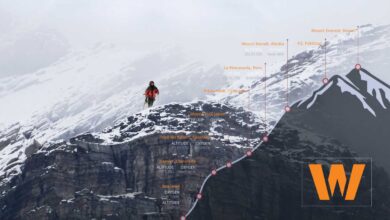The Thrilling Saga of K2: Summit & Expeditions
Nestled within the heart of the Karakoram Range, K2, the “Savage Mountain,” welcomes adventurers with a fascinating yet dangerous majesty. From the achieving moments of the K2 summit to the somber whispers of those who faced its formidable challenges, it is a testament to the human spirit’s eternal quest.
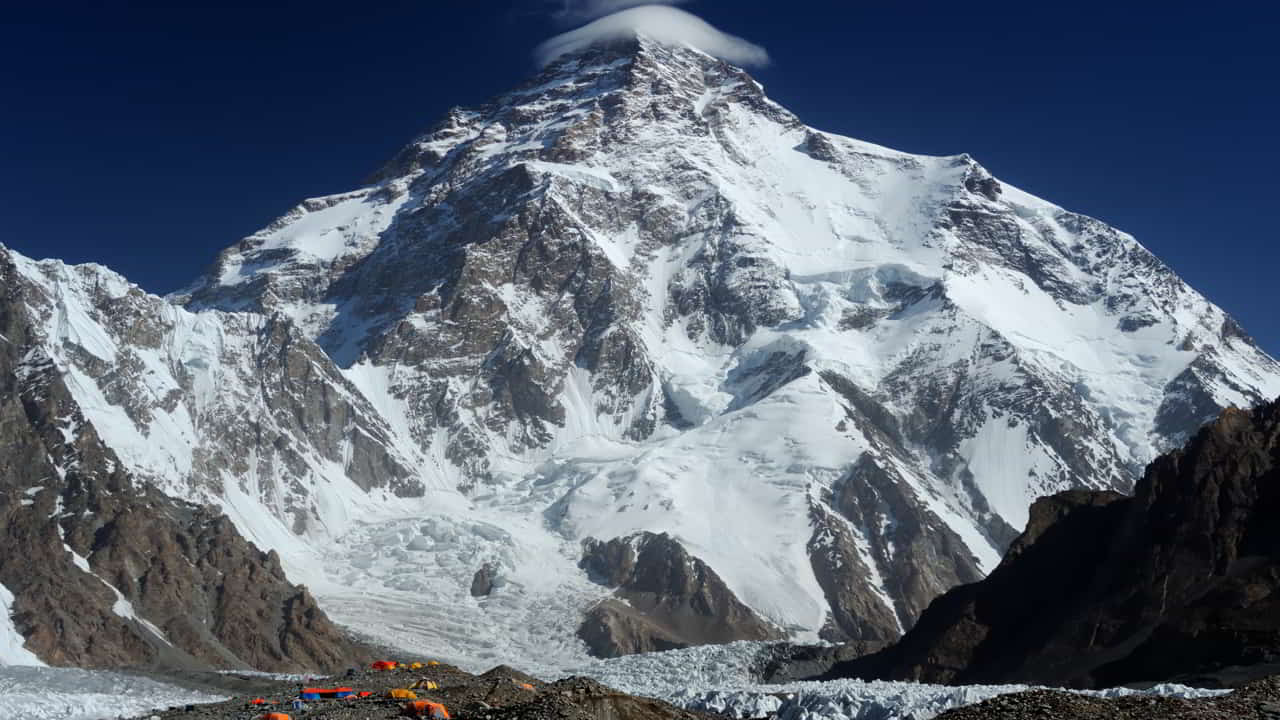
It stands as a silent witness to the joyous successes and heart-wrenching tragedies of those who dare to seek the peak of adventure. The saga of K2 is woven with threads of delight, sorrow, excitement, and threat.
Table of Contents
Let’s delve into the historical journey of the K2 summit, exploring both thriving and unsuccessful endeavors, the formidable dangers faced, and the human toll that has unfolded.
History of The Savage Mountain – Discovery
In the 1800s, British surveyors embarked on the Great Trigonometric Survey of India, aiming to map the subcontinent. During this time, K2, the “Mount Godwin-Austen,” earned its later name, signifying its place in the Karakoram Range.
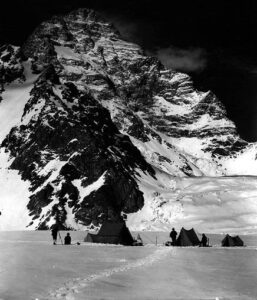
In 1856, British surveyor Thomas Montgomerie, stationed in the Haramukh Range in Kashmir, made observations that identified two standout peaks in the Karakoram, one of which we now know as K2.
Originally labeled “K1” and “K2” in the Karakoram, the latter earned the name Mount Godwin-Austen, named after British geologist Henry Haversham Godwin-Austen.
Various British surveys in the 19th century documented the Karakoram Range, adding to our understanding of K2’s location and features. It gained momentum from there after Mount Everest had been on top of the world for a long time.
In the early 20th century, pioneers like Oscar Eckenstein and Luigi Amedeo, Duke of the Abruzzi, embarked on expeditions to challenge K2 for the first time. However, their endeavors in 1902 and 1909, respectively, failed to make substantial progress.
The mountain would never be climbed after his attempt.
The Duke of the Abruzzi
Moving into the 20th century, later K2 summit and expeditions contributed to the rich history of exploration and climbing on K2. Such as by 2022 was the year with the most expeditions ever made in history:
| Data | Figures |
| Cumulative successful summits | 800 |
| Cumulative deaths | 96 |
| Fatality rate | 23 – 25% |
| The average cost to climb in U.S. dollars | $30,000 (approx.) |
Successful K2 Expeditions
Although summiting K2 has been threatening and life-risking for years after its discovery, some of the climbers made it possible. They faced challenges and lost their companions on the way but nothing could stop them from reaching the highest 8000enders in the world.
Here is the list of famous successful K2 summit from 1954 to 2021:
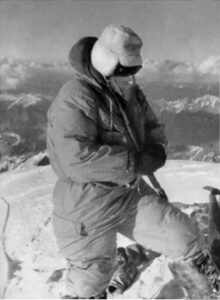
- 1954: Lino Lacedelli and Achille Compagnoni (Italy)
- Completion of Summit: July 31, 1954
- 1977: Wanda Rutkiewicz (Poland)
- Completion of Summit: June 23, 1977
- 1978: Reinhold Messner and Peter Habeler (Italy/Austria)
- Completion of Summit: August 10, 1978
- 1979: Yukihiro Yanagisawa and Hirotaka Takeuchi (Japan)
- Completion of Summit: August 7, 1979
- 1982: Nicolas Jaeger (France)
- Completion of Summit: July 6, 1982
- 1986: Jim Wickwire, Louis Reichardt, Rick Ridgeway, John (USA)
- Completion of Summit: September 6, 1986
- 1986: Liliane and Maurice Barrard (France)
- Completion of Summit: July 7, 1986
- Death/Reason: Maurice Barrard died during the descent.
- 1990: Araceli Segarra (Spain)
- Completion of Summit: July 26, 1990
- 1994: Russian-Kazakh Team
- Completion of Summit: July 31, 1994
- 1995: Andrzej Zawada (Polish)
- Completion of Summit: July 23, 1995
- 1996: Alan Hinkes, Yasuko Namba (UK & Japan respectively)
- Completion of Summit: July 10, 1996
Summits of 20th Century
- 2001: Tomaz Humar (Solvenian Team)
- Completion of Summit: August 22, 2001
- 2001: Piotr Morawski, Denis Urubko (Poland & Kazakhstan)
- Completion of Summit: August 7, 2001
- 2004: Edurne Pasaban (Spain)
- Completion of Summit: August 23, 2004
- 2006: Cho Oyu (International Team)
- Completion of Summit: August 1, 2006
- 2009: Fabrizio Zangrilli, Gerlinde Kaltenbrunner (USA & Austria respectively)
- Completion of Summit: August 1, 2009
- 2012: Gerlinde Kaltenbrunner (Austria)
- Completion of Summit: August 23, 2012
- 2014: Garrett Madison, Alan Arnette, and Matthew Dupuy
- Completion of Summit: July 27, 2014
- 2017: Adam Bielecki and Janusz Gołąb (Poland)
- Completion of Summit: July 22, 2017
- 2018: Geoff Schellens, Robert Smith (USA & Ireland)
- Completion of Summit: July 22, 2018
- 2021: Alan Arnette, Mingma Gyalje Sherpa, Juan Pablo Mohr (USA, Nepal & Chile)
- Completion of Summit: 16 January, 2021
- 2021: Nirmal Purja and Team (Nepal) – Historic Winter Ascent
- Completion of Summit: January 16, 2021
- 2022: More than 145 summits on K2 in a single day were recorded. This is the highest number of summits in a single day ever on K2
- 2023: It was also a busy season like 2022, where 112 summits estimated.
- Completion of Summit: July 27, 2023
- 2024: The weather played as havoc for the climbers this season. A total of approximately 50 summits happen.
- Completion of Summit: July 28, 2024
K2 Failed Attempts
Along with the successful K2 summit history, there are countless failed attempts to reach this deadly chogori peak. Various reasons became hindrances in summiting, whilst a disturbed inter-coordination between team had also played its factor.
Some of the most commonly known expeditions are:
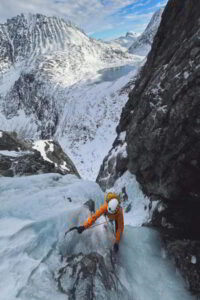
- 1938: Riccardo Cassin, Vittorio Ratti, and Gino Soldà (Italy)
- Dates: June to August 1938
- Reason for Failure: Severe weather conditions and technical difficulties. No fatalities.
- 1953: Charles Houston, Robert Bates, and Art Gilkey (America)
- Dates: March to June 1953
- Reason for Failure: Adverse weather conditions, avalanches, and the disappearance of Art Gilkey. The K2 mountain expedition was marred by tragedy as Gilkey was lost during a storm, presumed dead.
- 1954: Ardito Desio, Vasco Taldo, and Compagnoni (Italy)
- Dates: June to July 1954
- Reason for Failure: Harsh weather conditions and lack of technical equipment. The expedition had no fatalities.
- 1954: Charles Evans and Joe Brown (British)
- Dates: May to August 1954
- Reason for Failure: Unfavorable weather and technical difficulties. No fatalities, but it set the stage for later attempts.
- 1957: Fazal Ali, Captain Sher Khan, and Ghulam Rasool (Pakistan)
- Dates: July to August 1957
- Reason for Failure: Poor weather conditions and lack of high-altitude experience. No fatalities.
- 1962: Robert Bates, Tom Hornbein, and Jim Whittaker (America)
- Dates: March to June 1962
- Reason for Failure: Adverse weather conditions, high-altitude sickness, and the tragic loss of Art Gilkey during a storm.
- 1969: Ichiro Yoshizawa, Masatsugo Konishi, and Yutaka Ageta (Japan)
- Dates: June to July 1969
- Reason for Failure: Severe weather, avalanches, and technical difficulties. No fatalities.
- 1975: Georges Bettembourg, Nicolas Jaeger, and Robert Paragot (France)
- Dates: June to July 1975
- Reason for Failure: Adverse weather conditions, avalanches, and the disappearance of Robert Paragot. Paragot was lost during the descent, presumed dead.
- 1978: James Wickwire, Louis Reichardt, and John Roskelley (America)
- Dates: May to July 1978
- Reason for Failure: Severe weather, avalanches, and exhaustion. No fatalities, but it marked a significant effort to climb without supplemental oxygen.
- 1983: Rick Ridgeway, Louis Reichardt, and Jim Wickwire (America)
- Dates: June to August 1983
- Reason for Failure: Adverse weather conditions, avalanches, and exhaustion. No fatalities.
- 1986: Alan Rouse, Julie Tullis, and others (British) – (Known as the “Black Summer”)
- Dates: June to August 1986
- Reason for Failure: Harsh weather conditions, avalanches, and exhaustion. Multiple fatalities, including Julie Tullis.
- 1996: Various Expeditions (Including the tragic 1996 Everest disaster)
- Dates: June to August 1996
- Reason for Failure: Severe weather conditions, avalanches, and the tragedy of Everest
Common Expeditions of 20th Century
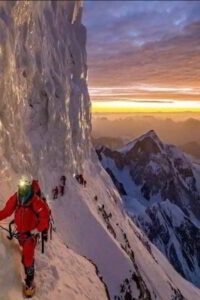
- 2010: Denis Urubko, Alexei Bolotov, and team (Russia)
- Dates: June to July 2010
- Reason for Failure: Adverse weather conditions, avalanches, and technical challenges. No fatalities.
- 2017: Vassily Pivtsov and Ildar Gabdullin (Russian-Kazakh)
- Dates: June to July 2017
- Reason for Failure: Adverse weather conditions, avalanches, and technical challenges. No fatalities.
- 2017/2018: Krzysztof Wielicki and team (Polish)
- Dates: December 2017 to March 2018
- Reason for Failure: Injury on south-southeastern spur
- 2022: Colin O’Brady and Dr. Jon Kedrowski (America)
- Dates: December 2020 to February 2021
- Reason for Failure: Adverse weather conditions, avalanches, and technical challenges.
- Deaths: Sergi Mingote, Juan Pablo Mohr, John Snorri, Ali Sadpara, and Atanas Skatov
Related Pick: Muhammad Ali Sadpara: A Porter, Family Man & Mountaineer
These failed attempts on K2, marked by tragedy and loss, are a stark reminder of the inherent risks in pursuing the summits of the world’s highest mountains.
Each expedition, whether successful or not, contributes to the collective understanding of the challenges posed by K2 and the indomitable spirit of those who dare to take up the experience of this journey of ultimate adventures.
K2 Deaths: A Chronicle of Tragedy
K2, the formidable peak in the Karakoram Range, has witnessed numerous tragedies throughout its climbing history of summit and expeditions. The list of climbers who met their untimely demise on this treacherous mountain is a testament to the inherent risks of high-altitude mountaineering.
The risks primarily include frostbite, avalanches, altitude sickness, and falls.
Here is a record of some of the climbers who lost their lives on K2:
| Dated | Climber | Native | Cause of Death |
| July, 28, 2024 | Kazuya Hiraide Kenro Nakajima | Japan | Falling from a height of about 24, 500 ft |
| July 27, 2023 | Muhammad Hassan | Pakistan | Falling and slipping off a narrow trail in the dangerous “Bottleneck” area. |
| July 20, 2022 | Richard Cartier Matt Eakin Sharif Sadpara Ali Akber Sakhim | Canada Australia Pakistan | Fall Found dead at Advanced Base Camp Falling through a soft spot on the summit ridge cornice Altitude Sickness |
| February 5, 2021 | Ali Sadpara John Snorri Sigurjónsson Juan Pablo Mohr Prieto | Pakistan Iceland Chille | Found dead on Bottleneck |
| December, 2020 | Sergi Mingote Juan Pablo Mohr John Snorri Atanas Skatov | Spain Chile Iceland Bulgaria | Adverse weather conditions, extreme temperatures |
| 30 July, 2014 | Miguel Ángel Pérez | Spain | Probably altitude sickness |
| 6 February, 2012 | Vitaliy Gorelik | Russia | Frostbite, Cardiac Insufficiency |
| 6 August, 2010 | Fredrik Ericsson | Sweden | Fall |
| 17 July, 2010 | Petar Georgiev Unzhiev | Bulgaria | Altitude sickness |
| 23 June, 2009 | Michele Fait | Italy | Fall with skis |
| 2 August, 2008 | Dong-jin Hwang | South Korea | Fourth serac fall |
| Kyeong-hyo Park | |||
| Hyo-gyung Kim | |||
| Mehrban Karim | Pakistan | Second or third serac fall | |
| Hugues d’Aubarede | France | Fall during descent | |
| Ger McDonnell | Ireland | Second or third serac fall | |
| 1 August, 2008 | Pasang Bhote | Nepal | Fourth serac fall |
| Jumic Bhote | |||
| Rolf Bae | Norway | First serac fall | |
| Jahan Baig | Pakistan | ||
| Dren Mandic | Serbia | Fall | |
| 15 August, 1995 | Jeff Lakes | Canada | Exhaustion |
| 13 August, 1995 | Bruce Grant | New Zealand | Killed in a storm |
| Rob Slater | USA | ||
| Alison Hargreaves | United Kingdom | ||
| Javier Escartin | Spain | ||
| Javier Olivar | |||
| Lorenzo Ortiz | |||
| 6 July, 1995 | Jordi Anglès | Spain | Fall |
| 10 August, 1986 | Dobroslawa Miodowicz-Wolf | Poland | Exhaustion |
| Alfred Imitzer | Austria | Altitude Sickness | |
| Hannes Wieser | United Kingdom | ||
| Alan Rouse | |||
| 7 August, 1986 | Julie Tullis | ||
| 4 August, 1986 | Mohammad Ali | Pakistan | Stonefall |
| 3 August, 1986 | Wojciech Wróz | Poland | Fall |
| 30 July 1982 | Renato Casarotto | Italy | Fall into crevasse |
| 10 July, 1986 | Tadeusz Piotrowski | Poland | Fall |
| 24 June, 1986 | Maurice Barrard Liliane Barrard | France | Lost |
| 21 June, 1986 | John Smolich Alan Pennington | USA | Avalanche |
| 7 July, 1985 | Daniel Lacroix | France | Unknown (disappeared) |
| 15 August, 1982 | Yukihiro Yanagisawa | Japan | Fall |
| 30 July, 1982 | Halina Krüger-Syrokomska | Poland | Stroke |
| 19 August, 1979 | Laskhar Khan | Pakistan | Stroke |
| 9 June, 1979 | Ali, Son of Kazim | Pakistan | Fall into crevasse |
| 12 June, 1978 | Nick Estcourt | United Kingdom | Avalanche |
| 21 June, 1954 | Mario Puchoz Italy Pneumonia | Italy | Pneumonia |
| 10 August, 1953 | Art Gilkey | USA | Avalanche |
| 31 July, 1939 | Pasang Kikuli Pasang Kitar Pintso | Nepal | Disappearance |
| 30 July, 1939 | Dudley Wolfe | USA | Altitude sickness and severe dehydration |
Conclusion
In the heart of the formidable Karakoram Range, K2, known as the “Savage Mountain,” has silently witnessed a saga of triumphs and tragedies.
From its early identification by British surveyors in the 1800s to the relentless pursuit of its summit in the 21st century, K2 stands as both a beacon of achievement and a reminder of the inherent dangers that accompany high-altitude mountaineering.
The tale of triumphs is written by the brave souls who conquered its heights, each successful ascent representing a victory over nature’s formidable challenges.
However, its narrative is not complete without acknowledging the heart-wrenching failures and sacrifices that mark its slopes. The unsuccessful attempts, often marked by adverse weather conditions, avalanches, and technical challenges, serve as reminders of the unpredictable nature of high-altitude mountaineering.
K2 is not some malevolent being, lurking there above the Baltoro, waiting to get us. It’s just there. It’s indifferent. It’s an inanimate mountain made of rock, ice, and snow. The “savageness” is what we project onto it, as if we blame the peak for our own misadventures on it.
Ed Viesturs
The tragic list of climbers who lost their lives on K2, from the “Black Summer” of 1986 to recent attempts in 2022, highlights the fragility of human life in the face of Savage Mountain’s unforgiving conditions.
Despite the setbacks, the story of K2 is a testament to the unwavering spirit of those who continue to pursue the summit. They embrace the risks and challenges with a profound respect for the mountain’s majestic nature.
Watch famous and renowned K2 movies ever made…

